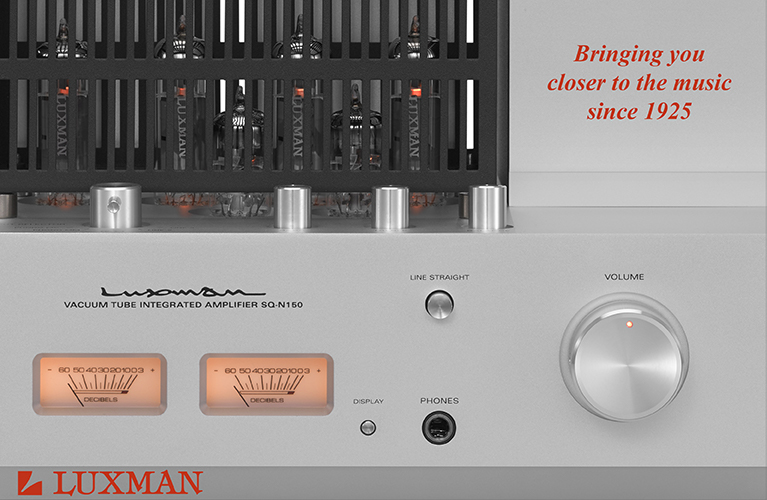 We’ve reviewed the Bryston BR-20 preamplifier and streaming DAC twice on SoundStage! Network sites. Gordon Brockhouse reviewed it for SoundStage! Simplifi in June 2021. Then, earlier this month, Evan McCosham reviewed it here on SoundStage! Hi-Fi. The reason for the two reviews has to do with the Bryston’s rich feature set, which makes it right at home on Simplifi, and its high level of sonic performance—desirable of course for Simplifi readers, but mandatory for Hi-Fi readers, who typically put far more focus on sound quality than features.
We’ve reviewed the Bryston BR-20 preamplifier and streaming DAC twice on SoundStage! Network sites. Gordon Brockhouse reviewed it for SoundStage! Simplifi in June 2021. Then, earlier this month, Evan McCosham reviewed it here on SoundStage! Hi-Fi. The reason for the two reviews has to do with the Bryston’s rich feature set, which makes it right at home on Simplifi, and its high level of sonic performance—desirable of course for Simplifi readers, but mandatory for Hi-Fi readers, who typically put far more focus on sound quality than features.
The BR-20’s base price is $6795 (all prices in USD), or $7500 with the optional HDMI board. The HDMI board can be purchased later for $850, but must be installed by a technician. An optional user-installable moving-magnet phono stage is available for $1000. Gordon and Evan reviewed the BR-20 without either of these options.
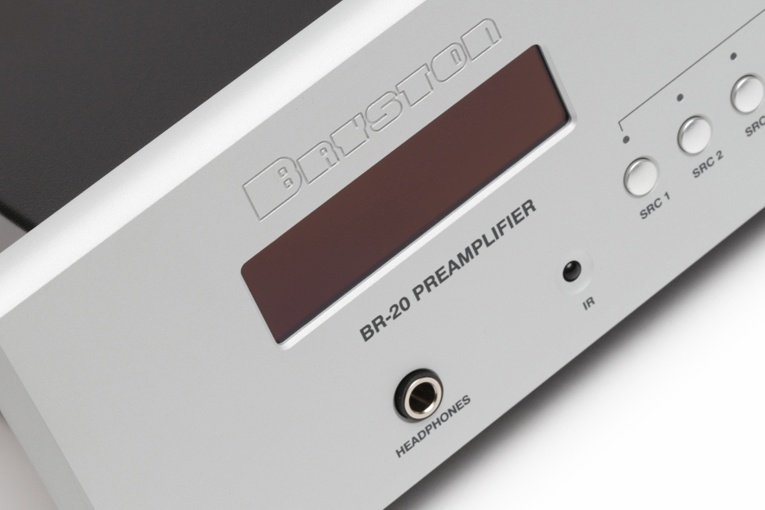
The BR-20 can be purchased with either a 17″ or 19″ faceplate. When Gordon reviewed the BR-20, the only finish options were black and silver. As Evan pointed out in his more recent review: “Bryston components are now available with champagne, white, and gun-metal gray faceplates” for no extra charge.
The BR-20 weighs just 12 pounds, which Evan remarked as being “surprisingly lightweight, especially for a Bryston component.” Gordon described the back-panel connections: “On the left side of the rear panel are four sets of analog inputs: two unbalanced (RCA female) and two balanced (XLR female), [while] to the right of the XLR outs are the digital inputs: two AES/EBU (XLR female), two coaxial S/PDIF (RCA female), and two optical S/PDIF (TosLink). The USB Type-B audio input is immediately above the two coaxial inputs.” As Gordon notes, “maximum resolution of the BR-20’s internal DAC is 24-bit/96kHz via TosLink; 24/192 via coaxial S/PDIF, AES, and HDMI; and 32/384 via USB and the streamer module. The BR-20 supports DSD, in both native and DoP (DSD over PCM) formats. Maximum resolution is DSD64 via HDMI, DSD256 via USB, and DSD128 via the streamer module.”
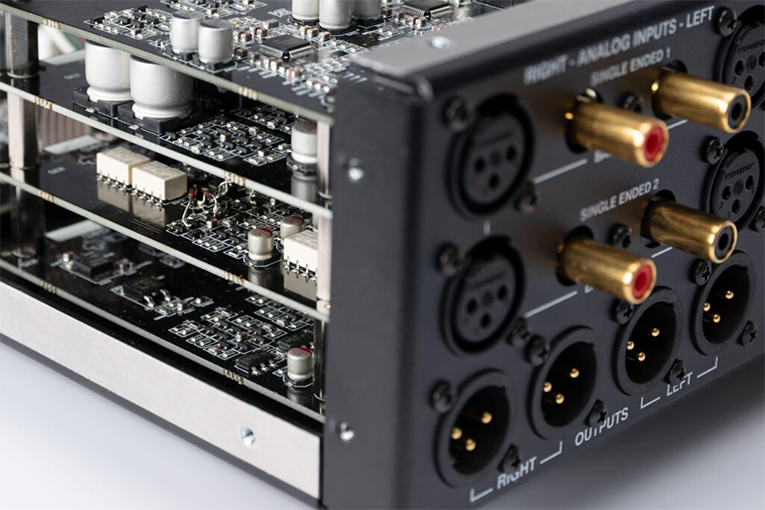
The BR-20 has numerous pushbutton controls on its front panel, but the most-used features are likely to be the large volume knob on the right and the small display screen on the left, which, as Evan pointed out, “shows volume level, input name, and track metadata,” and can be set to show “either two rows of text or . . . an easy-to-see volume readout that takes up the full height and width of the display.” There’s also a supplied remote control that replicates all the front-panel functions.
In his BR-20 test-bench report, measurement specialist Diego Estan noted that the volume-control circuitry attenuates the volume level in the analog domain, but is “digitally controlled and offers a range from -67dB to +12dB in 0.5dB steps (except below -30dB, where gain steps range from 4 to 1dB).” As his report also shows, the channel-balance accuracy of our review sample was first rate, with the worst case being 0.051dB of difference between channels at -40dB. Diego’s measurements also show that the BR-20’s gain is about 12dB, and the preamp has vanishingly low noise and distortion regardless of output level.
The BR-20 also features a headphone amplifier, which Diego measured for his report. Evan didn’t use the headphone amp for his listening, but Gordon gave a brief listening impression in his review; he summed it up as “great.” Gordon and Evan both focused on listening with speakers, which is typically how the BR-20 would be used. For Gordon, it was with a pair of Elac Navis ARF-51 active floorstanding speakers, which have amplification built in. He connected the BR-20 directly to his active Elacs with balanced cables. Evan used the BR-20 in his reference system, which comprises “a Bryston BDP-1 streamer, BDA-2 DAC, BP-25 preamp with MPS-1 power supply, and 3B SST2 power amplifier, which is rated at 150Wpc into 8 ohms or 250Wpc into 4 ohms.” The speakers were his Dynaudio Contour S 5.4s.
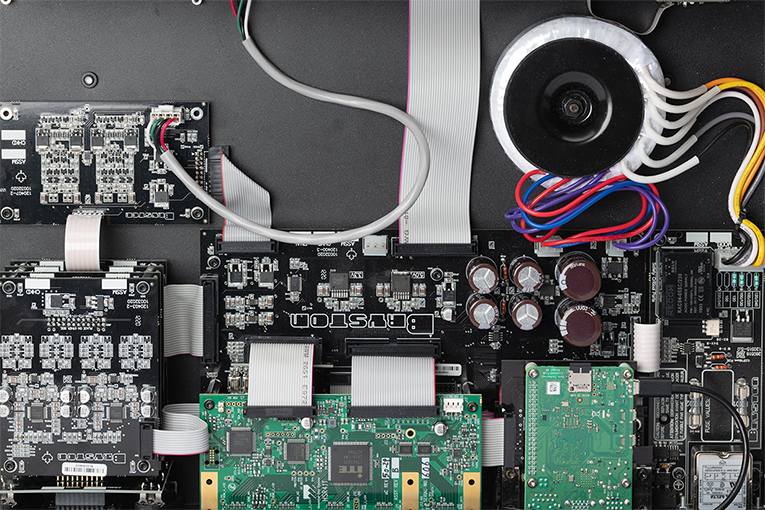
Gordon mainly used the BR-20 as a preamplifier and streaming DAC. But Evan first used it as a preamplifier only, then as a DAC plus preamp, and finally as a streamer, DAC, and preamp, to suss out how those individual elements compared to his BP-25 preamp, BDA-2 DAC, and BDP-1 streamer. Gordon and Evan both used the BR-20’s built-in Manic Moose web-based interface, but were unimpressed with its usability. Gordon described the quirks he encountered with Manic Moose as “weirdnesses,” citing, for example, its inability to properly sort music files stored on an attached USB drive. Evan called the use of Manic Moose “awkward,” but noted that the BR-20 now has Roon Ready certification, which it didn’t have when Gordon reviewed it. As a result, Roon subscribers can use that software for playback instead of Manic Moose. Most audiophiles find Roon superior to almost any other music-playback software currently available.
When it came to the performance of the BR-20’s hardware, however, there were no issues. As a preamp, Evan wrote that the BR-20 delivered “the most transparent sound” he’d ever heard from his “core system.” He reported hearing “more space around Hannah Reid’s haunting vocals” than ever before when he played London Grammar’s “Hey Now,” from If You Wait (24-bit/44.1kHz MQA, Columbia Records / Tidal). After removing his BDA-2 DAC from the signal path and connecting his BDP-1 streamer to the BR-20, Evan wrote:
The BR-20 did justice to every song I played, no matter the volume setting, the musical genre, or quality of the source material. Midrange detail and tonal quality improved dramatically. There was more detail from each recording, with those details more neatly placed in the overall mix. That inspired me to dig into albums from my youth—the likes of Our Lady Peace, Dave Matthews Band, Daft Punk, and of course, more of The Tragically Hip.
When using the BR-20 as a preamp, DAC, and streamer, Evan noted: “The sound was more detailed but less etched than it was through the BP-25/BDA-2/BDP-1 combination, with more space separating the performers and their instruments on a broader soundstage.”
Gordon was just as impressed by what he heard from the BR-20:
Throughout my listening, I was awestruck by the BR-20’s amazing microdetail. With familiar vocal and instrumental music, I heard nuances of expression that had escaped my attention before now. This heightened the emotional impact of whatever music I was hearing. It made music more communicative. Macrodynamics were effortless and completely natural. When the music called for it, the BR-20 scaled up to deliver muscular, authoritative sound.
He added: “Not only did it reveal the acoustic character of recording venues, it also presented aural images with almost uncanny three-dimensionality. Aural objects weren’t just precisely located on the soundstage; they had convincing breadth and depth, without ever seeming artificially holographic.” When he listened to “The Treasure,” from Aire and Angels II (16/44.1 ALAC, C+C Records), an album by the Norwegian jazz singer Siri Gjære and pianist Tord Gustavsen, Gordon could hear Gjære “pursing her lips as she formed consonants, her slightly nasal inflection of some vowels, her breathing at the end of a phrase (or sometimes in the middle).” Gordon also wrote about the way the BR-20 “brought Gjære’s exquisite word painting into the foreground—the way she lengthened some phrases, or softened her voice, or added a little quaver to the beginning of a phrase or a whispery close at the end of a phrase, or when she shifted pitch ever so slightly to draw attention to a lyric. The BR-20 presented these details without pushing them forward—they were just there.”
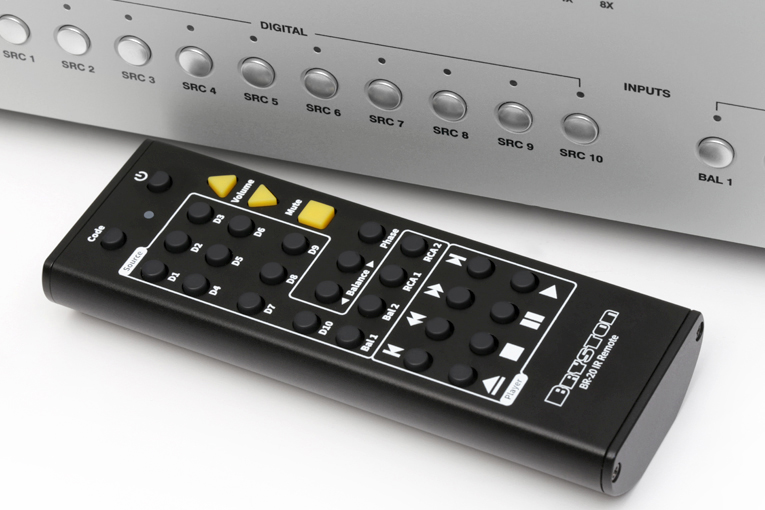
Gordon’s and Evan’s praise of the BR-20’s sterling sonic performance earned it a Reviewers’ Choice award when each review was published. Evan was so impressed that he purchased the review sample to be a reference in his own system. This month, their combined praise has earned the BR-20 a Recommended Reference Component award.
Manufacturer contact information:
Bryston Ltd.
677 Neal Drive
Peterborough, Ontario K9J 6X7
Canada
Phone: (800) 632-8217, (705) 742-5325
Fax: (705) 742-0882
Website: www.bryston.com






















